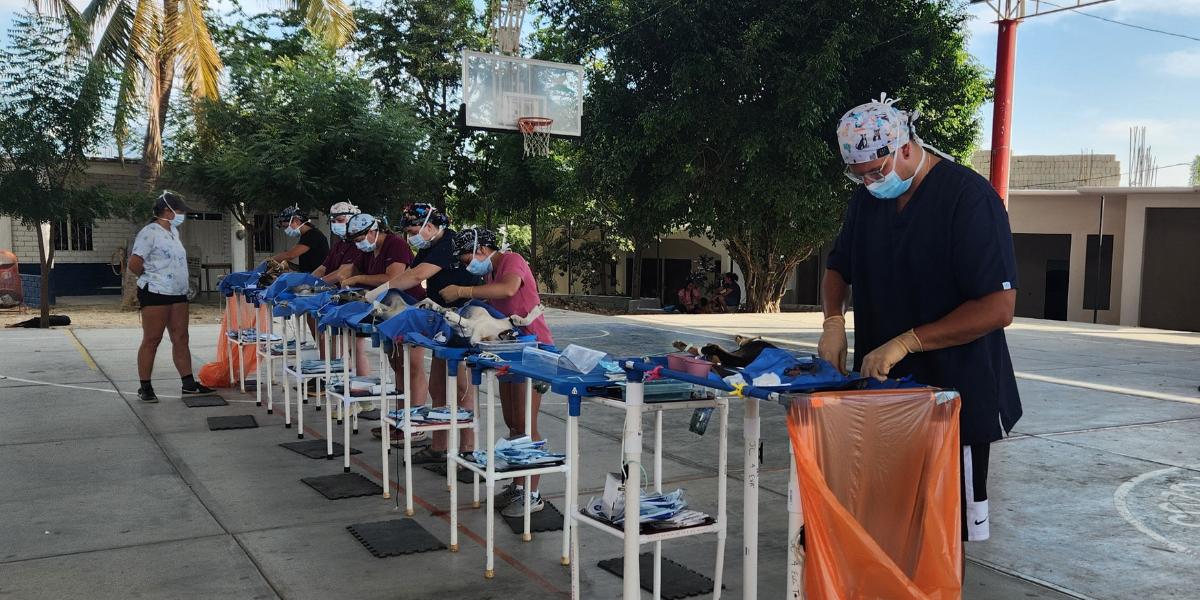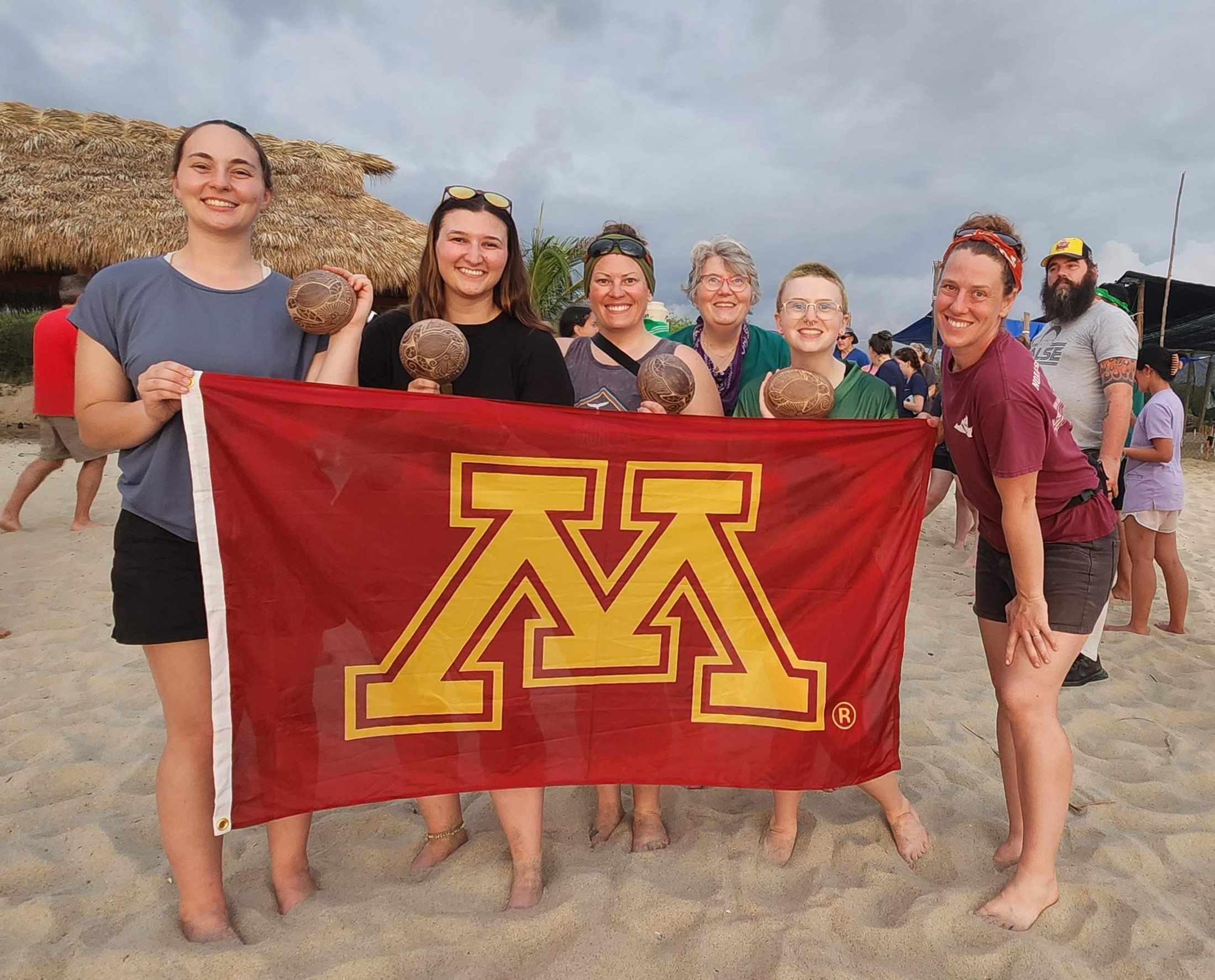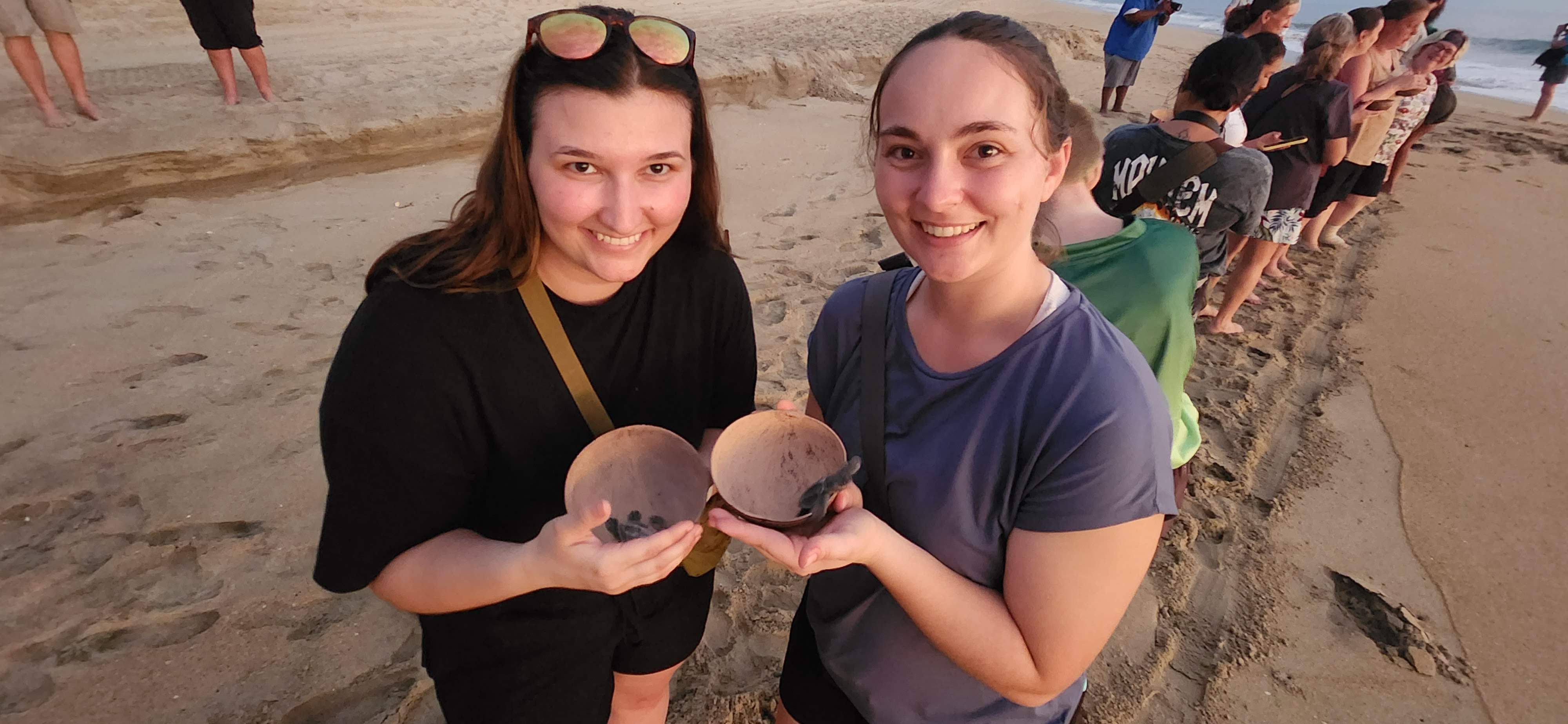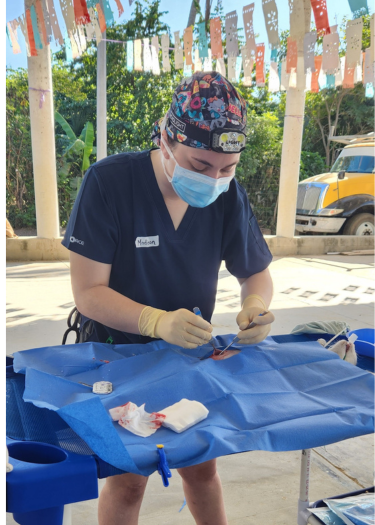Care beyond borders
CVM group joins an international volunteer effort in Mazunte, Mexico, that seeks to save sea turtles by keeping community dog populations in check

CVM group joins an international volunteer effort in Mazunte, Mexico, that seeks to save sea turtles by keeping community dog populations in check
Volunteers from the University of Minnesota and Michigan State University veterinary schools perform spay and neuter surgeries on dogs during a community medicine-focused trip to Mexico.
A basketball court in Mazunte, Mexico, is bustling with activity but not from a pickup game between locals. Instead, several tables span the concrete, and on each lays an anesthetized dog undergoing surgery.
Among those holding the scalpels are two veterinary students from the University of Minnesota College of Veterinary Medicine (CVM). Madison Baumgartner and Tess Schaefer, both fourth-year DVM students, were among a group of international volunteers who performed spay and neuter surgeries on community dogs this past January.
The makeshift surgery suite didn’t come with all the familiar bells and whistles, and temperatures around them often pushed into the 90s, but it didn’t prevent them from providing care to their patients.
“It was perfect for the resources we could get and the community we were serving,” Baumgartner says. “Medicine is an art. There are so many ways to get to the same ending. So many opportunities we have to provide accessible and affordable care if the area is in need of it.”
The surgeries also have a larger impact that resonates within the surrounding community and environment.
On nearby beaches, thousands of sea turtles arrive each year to dig nests and lay eggs. Roaming dogs prey on eggs and hatchlings, attack adult turtles, and disrupt the nesting sites. The Mazunte Project seeks to diminish the dogs’ impact on the turtle population and the greater ecosystem by bringing in volunteers to perform spay and neuter surgeries on the dogs as well as provide preventative care and medical treatments.
Students, faculty, and staff from CVM joined a larger group from the Michigan State University College of Veterinary Medicine and operated as a team throughout part of the trip. Baumgartner and Schaefer were accompanied by Drs. Melinda Wilkins and Whitney Waldsmith and veterinary technician Jenny Glover.

Since its inception, the Mazunte Project has helped more than 12,000 animals—a feat that requires significant volunteer power. The project organizers facilitate a large spay/neuter campaign each year that sends volunteers to about 20 towns in the state of Oaxaca. They also work with nonprofit organizations to acquire supplies for the campaign.
Volunteers are joined by local veterinarians who coordinate supplies and spaces for the procedures as well as assist with the surgeries and instruct veterinary students. It’s a learning experience that challenges students to think beyond the gold standard of care they are often taught in school.
“Situations like this give them a unique opportunity to work on their critical thinking skills, especially when they're in a resource-limited setting,” says Wilkins, an associate professor in the Department of Veterinary Population Medicine, who organized the trip. “They have to think about what is really critical in this situation, what can we do without, what would be a good substitute for this product or this drug?”
With help from volunteers, organizers estimate 40,000 additional hatchlings are now released into the ocean each year since the Mazunte Project began in 2001. The care provided to the dogs also has decreased human cases of zoonotic hookworm in the area. Hookworms can enter the body through the skin of the feet if people walk barefoot on soil or sand where infected animals defecate.

Both Baumgartner and Schaefer agree that being part of a One Health initiative that improves not only the health of the animals they spayed and neutered but also of people and the environment was fulfilling.
“I didn’t truly understand the impact that the Mazunte Project had on the community until I experienced it for myself,” Schaefer says. “Everyone that I talked to was so grateful and appreciative of the service we were providing.”
The trip also gave students the chance to hone their surgical skills under the guidance of multiple veterinarians. It’s something that Schaefer says will be very helpful in her future career.

“I had the opportunity to work with several veterinarians, who all had different approaches and techniques to spays and neuters,” she says. “I enjoyed getting to learn and practice these different techniques to find which ones felt most comfortable for me. It's comforting to know that there isn’t only one correct way to approach the surgeries and that I can explore what works best for me.”
By the end of the trip, both Schaefer and Baumgartner had each performed more than 35 surgeries with patients ranging from small kittens to dogs weighing more than 50 pounds. In addition to the basketball court, they performed surgeries in other public settings such as in front of police stations and next to schools. They also contended with heat, high winds, and construction noise during procedures.
“It's so amazing to watch their progress from their starting day to the end of the campaign,” Wilkins says. “The time it takes to do the surgeries decreases, incisions get smaller, recovery is faster and just watching their confidence grow is amazing to see happen.”
Wilkins hopes to make the trip an annual offering for fourth-year CVM students and bring larger groups in the future. Students interested in learning more about the opportunity can contact Wilkins at wilki510@umn.edu. Both Schaefer and Baumgartner recommend it as an impactful experiential learning opportunity.
“I can confidently say I will look back at this trip for years and years to come,” Baumgartner says. “Not only for the surgery experience but also the impact and connections I made.”